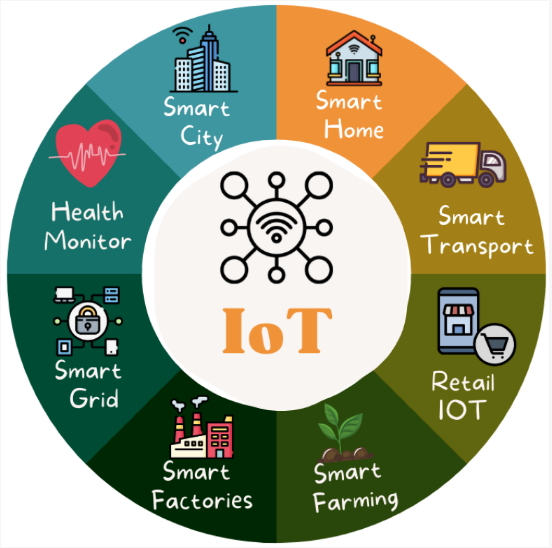IoT Regulations: A Comprehensive Guide

Categories:
4 minute read
Understanding IoT Regulations
The Internet of Things (IoT) has revolutionized various industries, but its rapid growth has also raised concerns about data privacy, security, and consumer protection. To address these challenges, governments and regulatory bodies worldwide have implemented various IoT regulations.
Key Areas of IoT Regulation
Data Privacy: IoT devices collect and transmit vast amounts of personal data, making data privacy a major concern. Regulations such as the General Data Protection Regulation (GDPR) and the California Consumer Privacy Act (CCPA) impose strict requirements on how organizations handle personal data collected through IoT devices.
Cybersecurity: IoT devices are often vulnerable to cyberattacks, posing risks to both individuals and businesses. Regulations like the Payment Card Industry Data Security Standard (PCI DSS) and the Health Insurance Portability and Accountability Act (HIPAA) mandate specific security measures for IoT devices in certain industries.
Product Safety: Ensuring the safety of IoT devices is crucial, especially those used in critical infrastructure or consumer products. Regulations like the Federal Communications Commission (FCC) rules and the European Union’s Radio Equipment Directive (RED) set standards for the safety and electromagnetic compatibility of IoT devices.
Consumer Protection: IoT devices can have a significant impact on consumers’ lives. Regulations like the Consumer Product Safety Commission (CPSC) rules and the Federal Trade Commission (FTC) guidelines protect consumers from unfair or deceptive practices related to IoT products. Major IoT Regulations
General Data Protection Regulation (GDPR): This EU regulation applies to any organization that processes personal data of EU residents. It imposes strict requirements on data collection, storage, and processing, including the right to be forgotten and data portability.
California Consumer Privacy Act (CCPA): This California law grants consumers certain rights regarding their personal data, including the right to know, the right to delete, and the right to opt-out of the sale of personal information.
Payment Card Industry Data Security Standard (PCI DSS): This standard applies to any entity that stores, processes, or transmits cardholder data. It requires specific security measures to protect card data from unauthorized access.
Health Insurance Portability and Accountability Act (HIPAA): This US law sets standards for the privacy and security of protected health information (PHI). It applies to healthcare providers, health plans, and their business associates.
Federal Communications Commission (FCC) Rules: The FCC regulates the use of radio frequencies in the United States. It sets standards for the safety and electromagnetic compatibility of IoT devices.
European Union’s Radio Equipment Directive (RED): This directive sets standards for the safety and electromagnetic compatibility of radio equipment, including IoT devices, in the EU.
Consumer Product Safety Commission (CPSC) Rules: The CPSC regulates consumer products in the United States. It can recall unsafe IoT products and impose fines on manufacturers.
Federal Trade Commission (FTC) Guidelines: The FTC provides guidelines on unfair or deceptive practices related to IoT products, including advertising and consumer protection. Challenges and Opportunities
Complexity: IoT regulations can be complex and difficult to understand, especially for small businesses and startups.
Global Variation: Regulations vary across different jurisdictions, making it challenging for organizations with a global footprint to comply with all applicable laws.
Rapid Technological Advancements: The rapid pace of technological advancements in IoT can make it difficult for regulators to keep up with the latest developments.
Enforcement Challenges: Enforcing IoT regulations can be challenging, especially for cross-border activities and devices that operate on a global scale. Despite these challenges, IoT regulations also present opportunities for innovation and responsible development. By complying with regulations, organizations can build trust with consumers and avoid legal penalties. Additionally, regulations can drive the development of secure and privacy-preserving IoT technologies.
Future Trends in IoT Regulation
Increased Focus on Cybersecurity: As cyber threats continue to evolve, we can expect to see a greater emphasis on cybersecurity regulations for IoT devices.
Data Privacy Protections: Data privacy will remain a top priority for regulators, with potential new regulations and updates to existing laws.
International Cooperation: There is a growing need for international cooperation to address the global challenges of IoT regulation.
Emerging Technologies: Regulations will need to adapt to emerging IoT technologies, such as artificial intelligence and blockchain. Conclusion
IoT regulations are essential for ensuring the safe, secure, and ethical development and use of IoT devices. By understanding the key regulations and addressing the challenges they present, organizations can navigate the complex landscape of IoT regulation and build trust with consumers. As the IoT continues to evolve, it is crucial for regulators and industry stakeholders to work together to develop effective and adaptable regulations.
Feedback
Was this page helpful?
Glad to hear it! Please tell us how we can improve.
Sorry to hear that. Please tell us how we can improve.